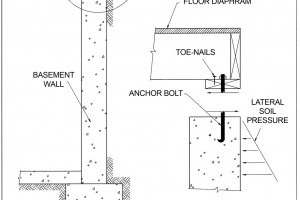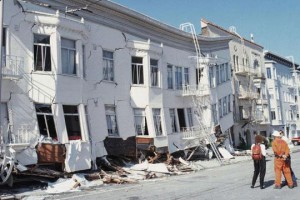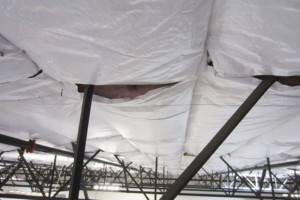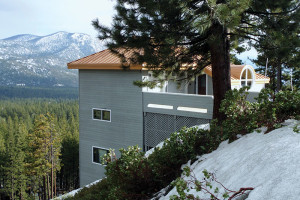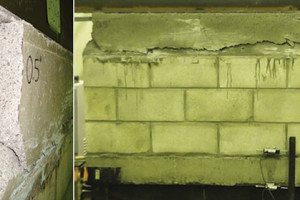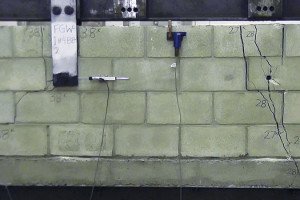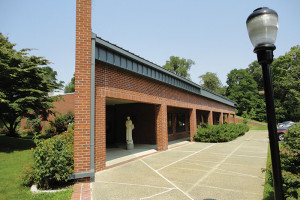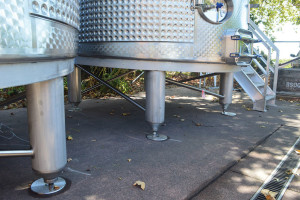As structural engineers engaged in forensic investigations of failed structures, the authors have encountered concrete foundation walls at residential and retail facilities that have failed as the result of lateral soil pressure. In many instances, the walls are primarily reinforced with vertically oriented rebar with nominal horizontal steel, implying that the top of the wall is supported laterally by the framed floor system. …
Review Category : Lessons Learned
In 2013, the City of San Francisco embarked on an ambitious and groundbreaking endeavor: the mandatory seismic retrofit of its wood-framed soft-story apartment buildings. The 1989 Loma Prieta earthquake caused considerable damage to such buildings in the Marina District (Figure 1) and exposed the vulnerability of buildings with soft and weak first stories. Yes, even wood-framed buildings, thought by most engineers to be the most naturally earthquake resistant type of structure due to their lightweight nature and reserve strength, can collapse under the right (or perhaps wrong) circumstances. According to a 2016 report by the Association of Bay Area Governments, San Francisco had 6,700 soft-story buildings, far more than the rest of the region combined. …
Condensation on interior surfaces can cause corrosion and wood decay if not addressed promptly. Repair and restoration of decayed structural elements are important. Equally important is determining the source of the problem, so it does not reoccur. Condensation is moisture vapor collecting on a cold surface – in this case, wood roof sheathing at the interior of the building. …
Lessons Learned from a Fatal Accident
Recently, an insurance adjuster engaged one of the authors to help determine the replacement cost for vehicle damage to a residential garage. The residence is constructed on a hillside, on the downslope side of the roadway. The house is typical of many at such locations; the garage and public living spaces are at the uppermost/street level and private spaces like bedrooms are located in the story below. …
In the May 2016 issue of STRUCTURE, Part 1 of this series addressed through-bolts in masonry walls. That article was based on hybrid masonry research funded by the National Science Foundation’s Network for Earthquake Engineering Simulation Research (NEESR), but the information provided is useful to all designers of masonry construction where through-bolts are useful. …
As voluminous as our codes have become, they do not provide guidance to all situations. Students in structural design classes often ask the professor, “What is the procedure I need to follow?” The question they should be asking is “What is the underlying behavior?” Only then will they begin to develop engineering judgment and be able to correctly implement code provisions in their designs. …
After 30 Years, a Friary Project continues to Provide Valuable Lessons
In 1981, a young architect and the author were tasked with designing a friary at Siena College in upstate New York. The friary is a residence for the Franciscan Friars who are administrators, professors and staff members at the college. The building (Figure 1) includes two residential wings and a large entrance and common area. …
On August 24, 2014, a magnitude 6.0 earthquake occurred northwest of American Canyon, California. The earthquake was located between two faults: the West Napa Fault and the Carneros-Franklin Fault near the north shore of the San Pablo Bay. Structural damage was most severe in the downtown Napa region, where a number of unreinforced masonry (URM) buildings were located. Damage to residential building construction was also observed surrounding the downtown region, and became less severe farther away from town. …
“Put away your swords. They will get rusty in the dew.”
– Othello, Act 1, Scene 2, by William Shakespeare, circa 1603
Corrosion has been a problem since the beginning of the Iron Age, circa 1200 BC. Before the Industrial Revolution, corrosion was recognized and respected in hand-produced objects, such as weapons. After the advent of machinery that was used to fabricate metal alloys for structural framing members and components exposed to the elements, corrosion found new targets. The metal alloys include but are not limited to wrought iron, cast iron, hot-rolled steel, and stainless steel. …
The Devil is in the Details
The Design-Build concept is gaining increased acceptance, and there’s no doubt it’s a seductive option to a cost-conscious building owner. Who wouldn’t want to shave off the direct cost of professional design fees? After all, a building’s a building, isn’t it, and it’ll come with a warranty, won’t it? Hey, the contractor promised to deliver a total package and understands my needs. …

